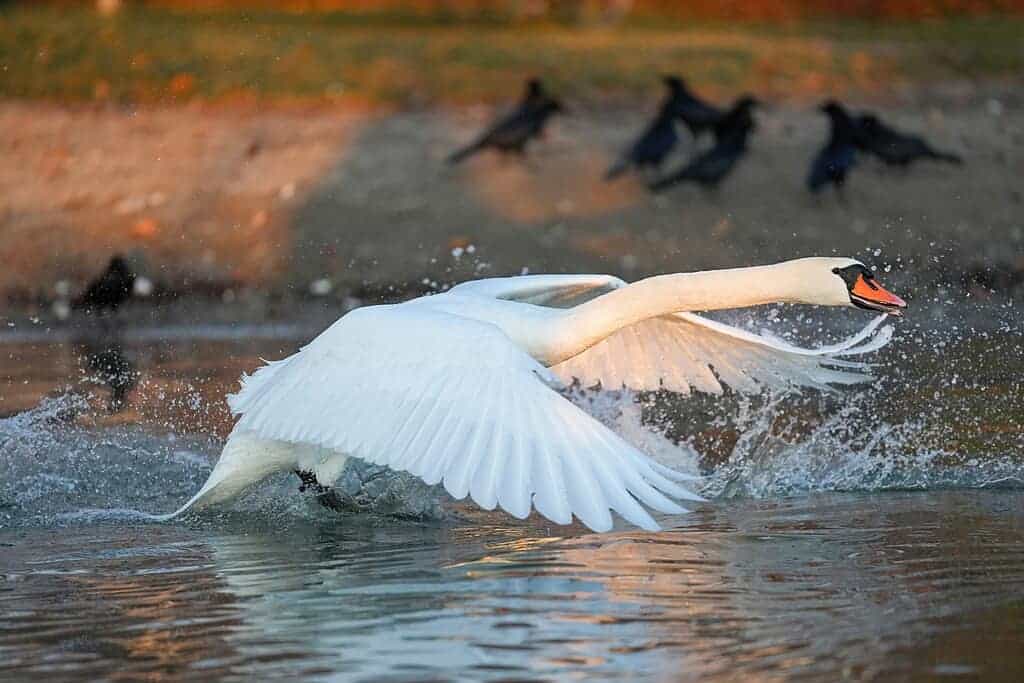The Mute Swan is an iconic representative of elegance and serenity in the natural world. With its mesmerizing grace, the Mute Swan has captured the imagery and admiration of many cultures throughout history. This article explores the captivating world of the Mute Swan, offering insights into its appearance, behavior, and role in ecosystems.
Understanding the Mute Swan
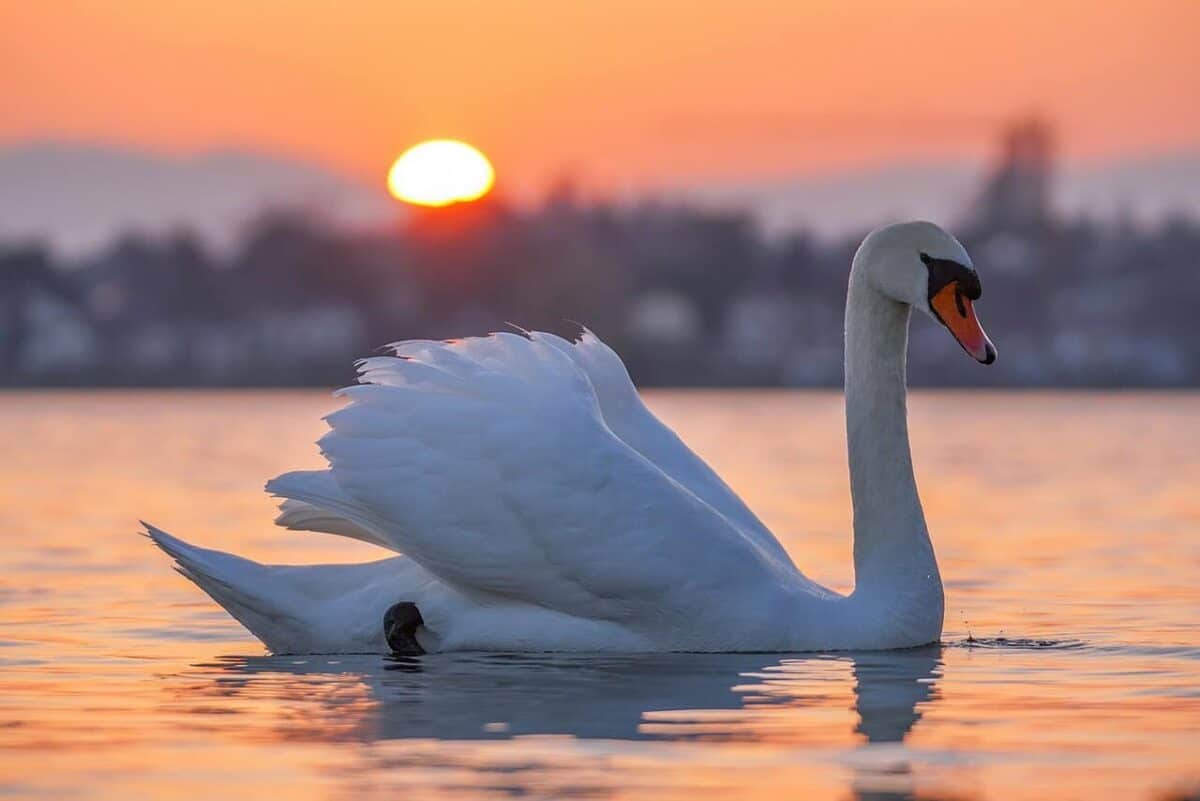
Known scientifically as *Cygnus olor*, the Mute Swan belongs to the waterfowl family Anatidae. This species is native to Europe and parts of Asia but has been introduced to North America, where it has become a cultural symbol of beauty and tranquility. Despite its name, the Mute Swan is not entirely silent; the term ‘mute’ refers to it being less vocal than other swans.
Striking Physical Characteristics

The Mute Swan is one of the largest flying birds, recognized by its radiant white plumage, elongated neck, and distinctive orange bill, marked with a black knob at its base. Adult Mute Swans can stretch to a length of approximately five feet and possess an impressive wingspan of nearly seven to eight feet, making them a majestic sight when gliding across water bodies.
Behavior in the Wild

Mute Swans are known for their territorial nature, often establishing and defending their breeding and feeding areas vigorously. They communicate with various hissing and grunting sounds and are known to engage in elaborate displays, especially during the breeding season. Their striking poses involve arching their wings and curving their necks, which help in establishing dominance and attracting mates.
Swans and Social Structure
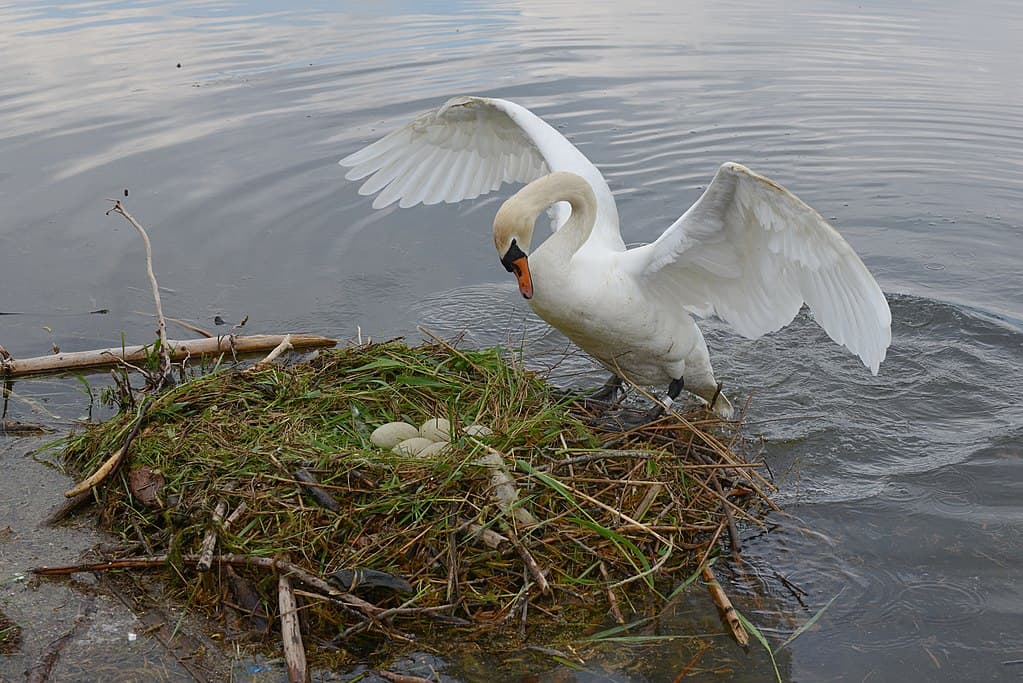
Typically, Mute Swans form monogamous pairs that bond for life, showcasing a deep commitment to their partners. These strong pair bonds are evident in their coordinated parenting, as both male and female swans take part in raising and protecting their cygnets. Family groups often stay together through the fledgling stage until the juveniles are ready to venture independently.
Diet and Feeding Habits

Mute Swans feed primarily on aquatic vegetation, which they forage from the water by upending – a behavior where they tip forward and use their long necks to reach submerged foods. They also graze on land, consuming grasses and occasionally supplementing their diet with small aquatic creatures. Their feeding habits play a role in maintaining the health and balance of aquatic ecosystems.
Habitat Preferences
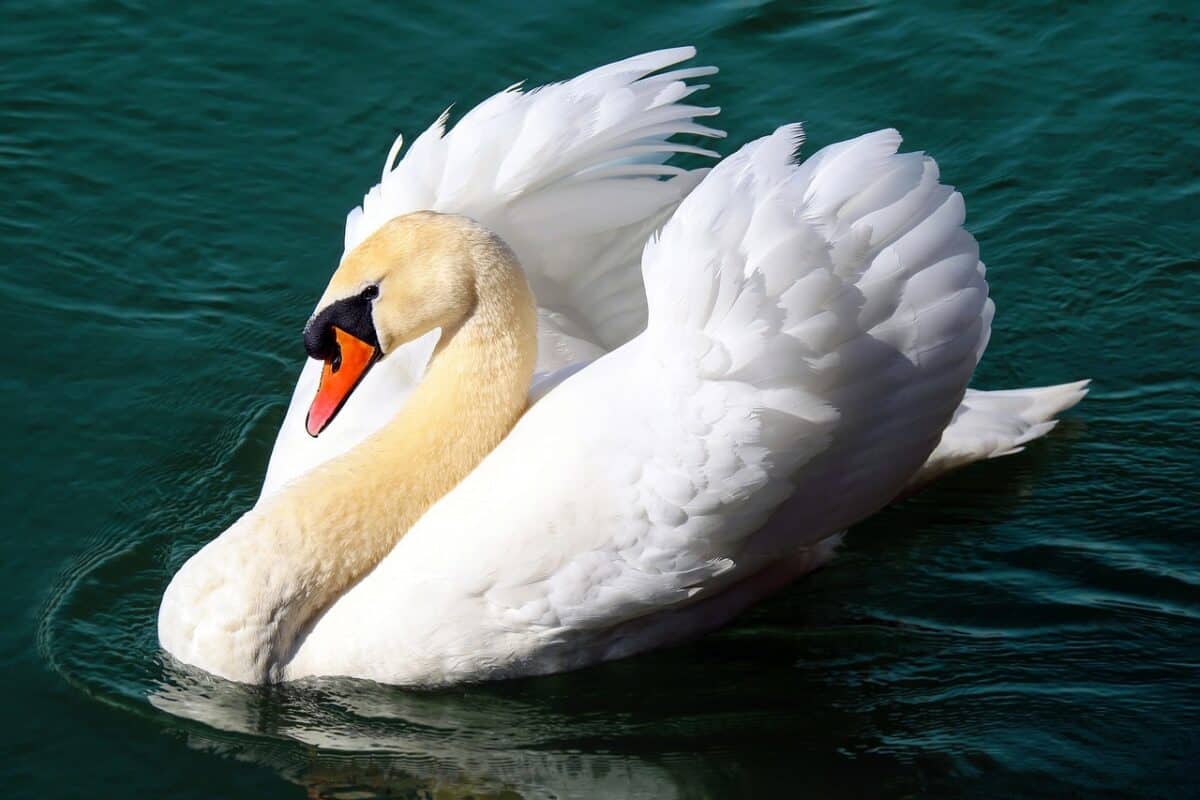
These swans thrive in a variety of freshwater environments, including lakes, ponds, and rivers. They prefer habitats with abundant food resources and minimal human disturbances, although they are adaptable to urban areas where food sources are available. The presence of reeds and other aquatic plants is crucial for successful nesting as it offers protection and sustenance for the birds.
Nesting and Reproduction
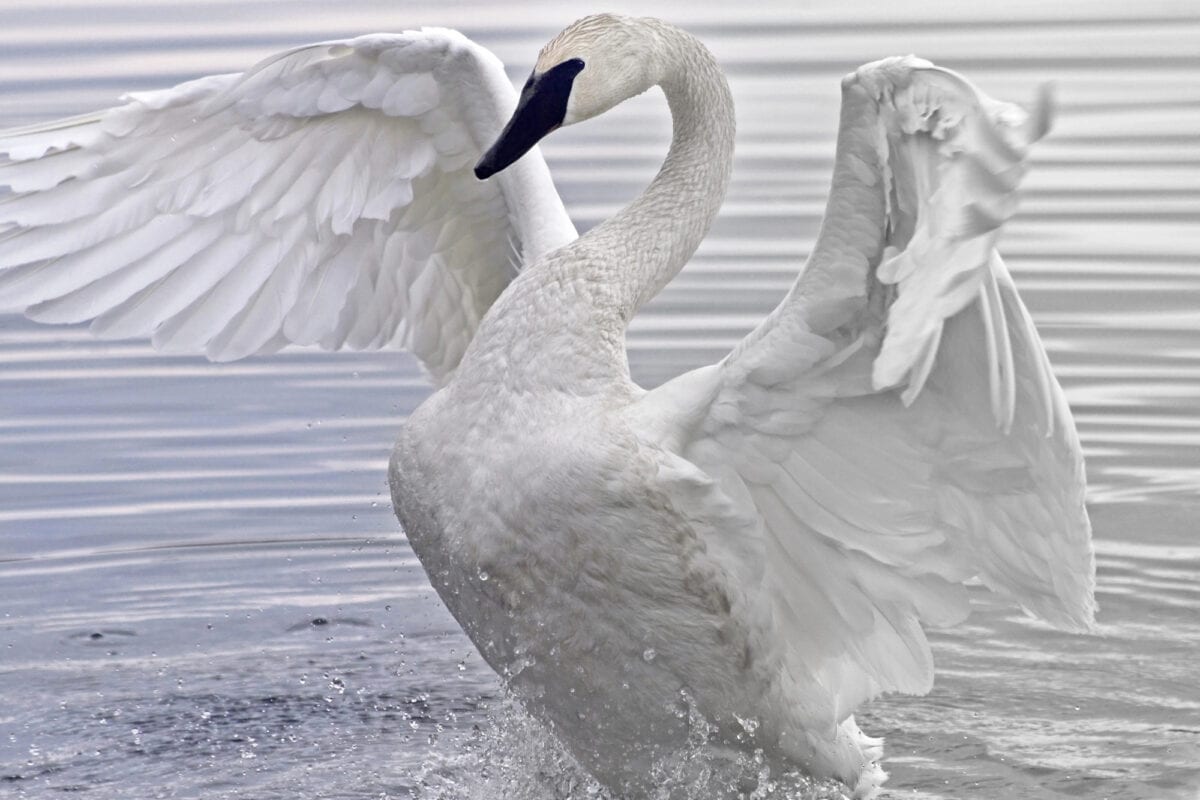
The breeding season of Mute Swans occurs during spring. They construct large nests from reeds and grasses near water shores. A typical clutch consists of four to eight eggs, which both parents incubate over a period of around 35 days. Cygnets are precocial, meaning they are relatively mature and mobile from birth, although they rely on parental care for guidance and protection.
Mute Swans in Culture and Mythology
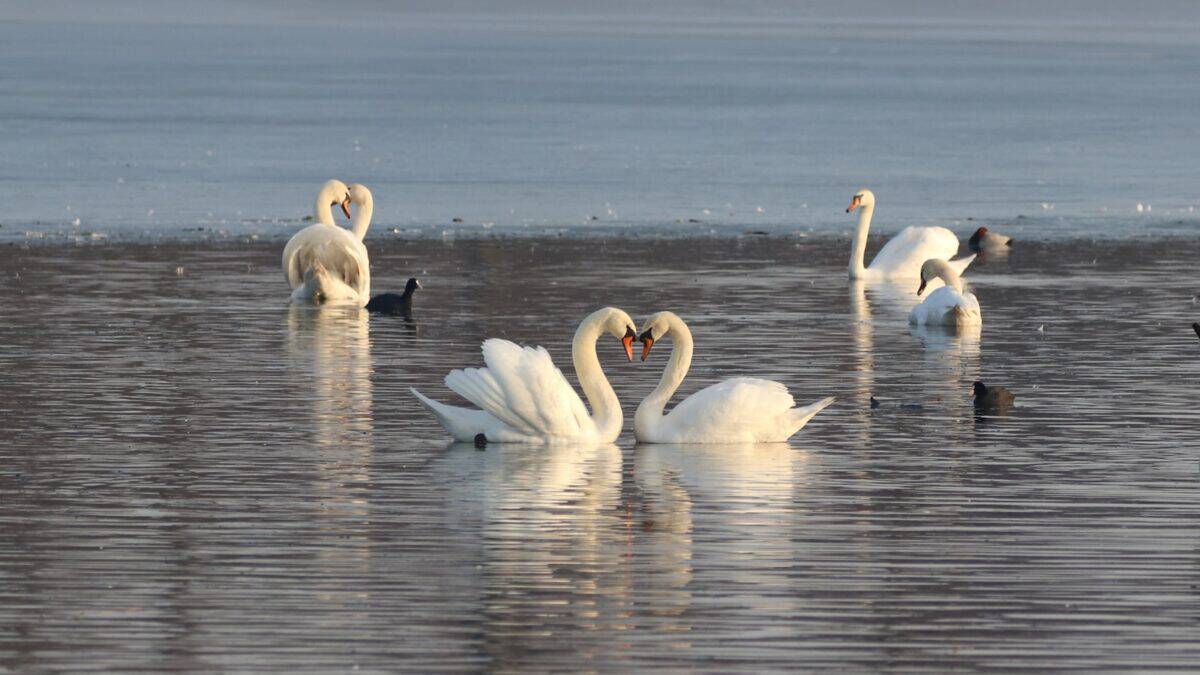
Throughout history, the Mute Swan has held a significant place in folklore and mythology. In many cultures, it symbolizes grace, purity, and love, often appearing in literature and mythology as a noble creature. Its elegance and serene presence have inspired countless artists, writers, and even composers to feature the swan in various creative works.
Conservation Status and Challenges
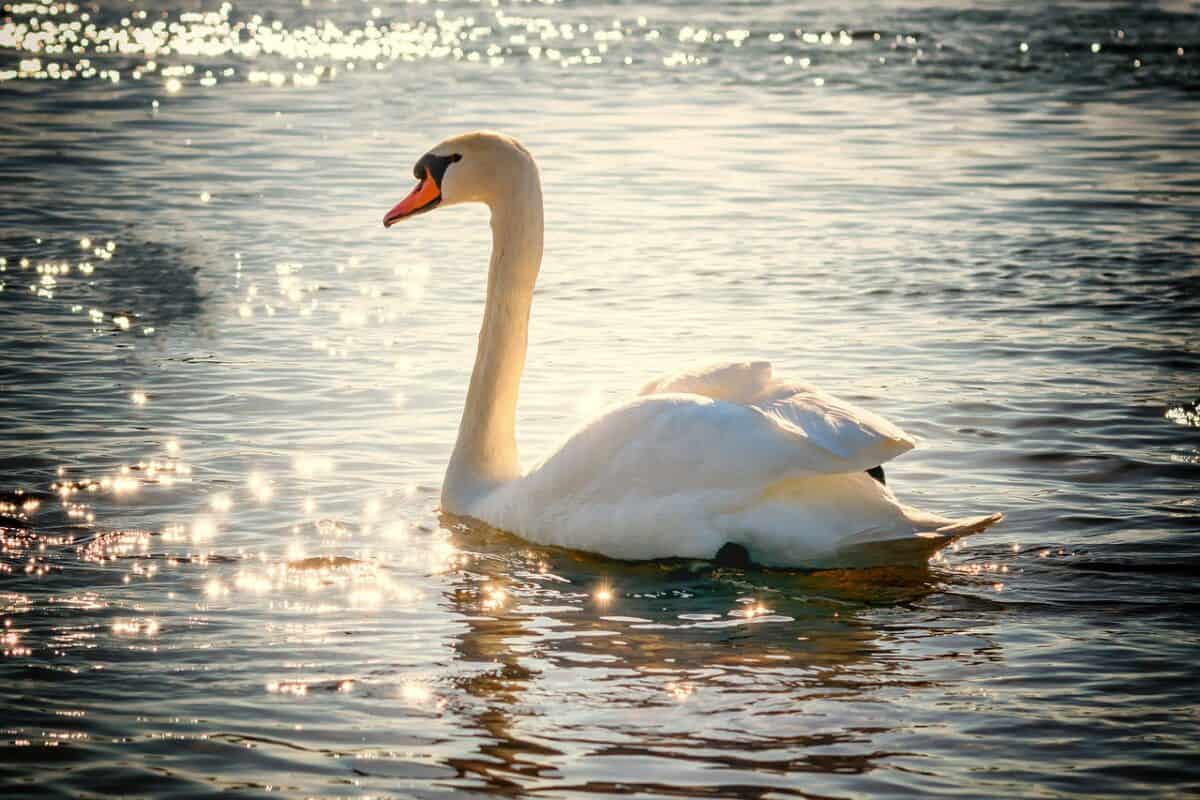
The introduction of Mute Swans in non-native regions, particularly in North America, has sparked ecological concerns, primarily due to their impact on local species and habitats. While they are not considered endangered globally, managing their populations to mitigate potential ecological imbalances is crucial. Conservationists monitor these swans to maintain the harmony of ecosystems they inhabit.
The Role of Mute Swans in Ecosystems
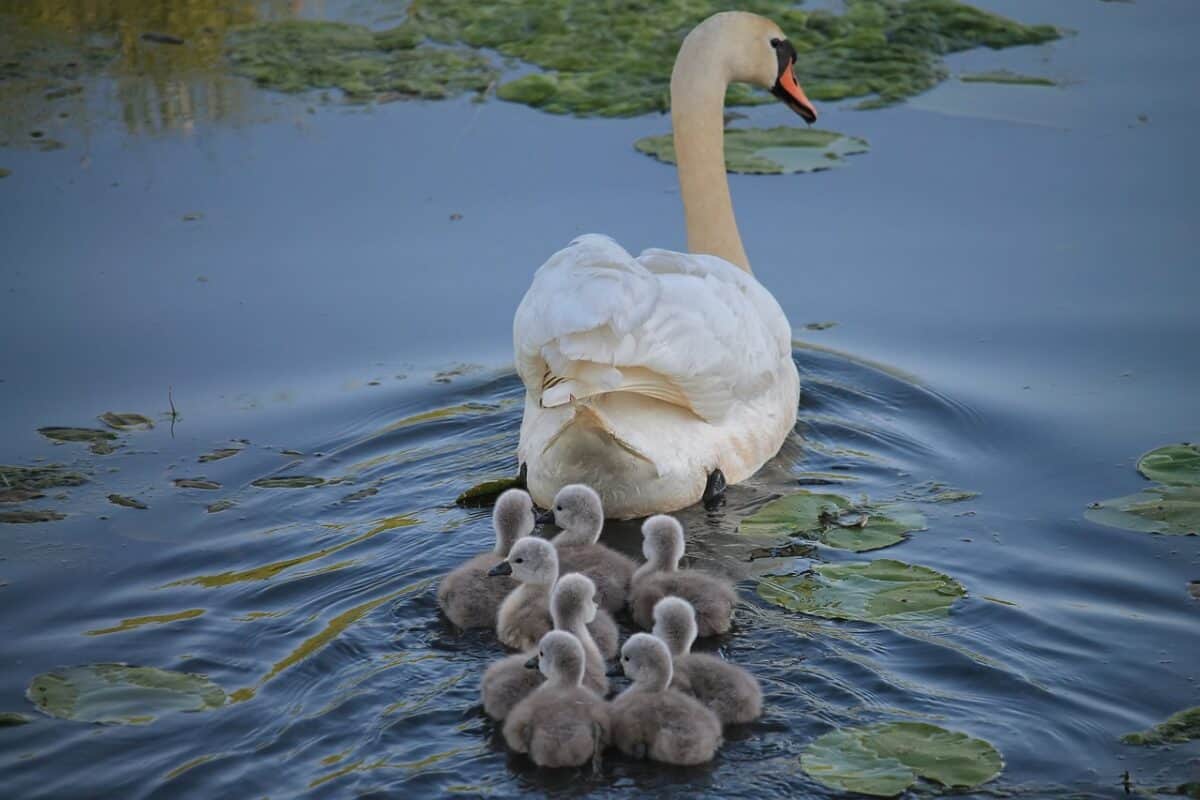
Beyond their symbolic value, Mute Swans play an important ecological role. By feeding on submerged vegetation, they help control plant growth and contribute to nutrient cycling in water bodies. Their presence provides habitat enhancements for other species, making them integral components of their ecosystems.
Interactions with Humans
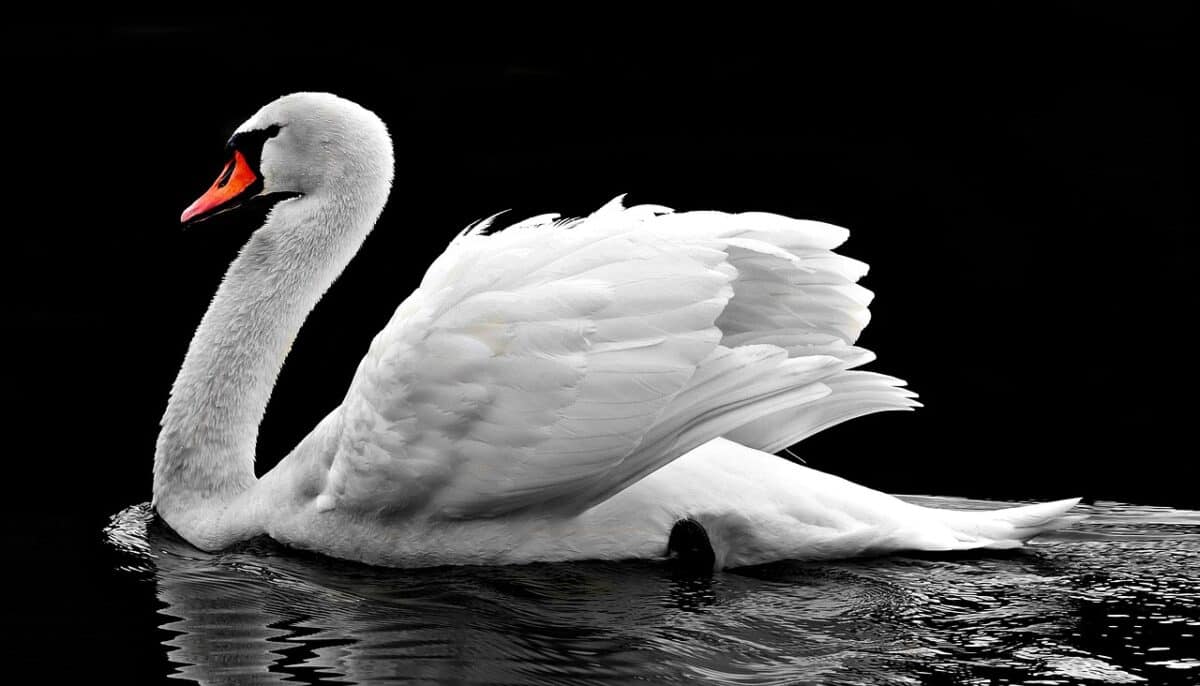
The relationship between humans and Mute Swans is multifaceted. On one hand, they are cherished for their elegance in parks and ponds, serving as a natural spectacle for people. However, their aggressive territorial behaviors and ecological impacts can lead to conflicts, necessitating careful management of their populations in human-dominated landscapes.
Caring for Mute Swans
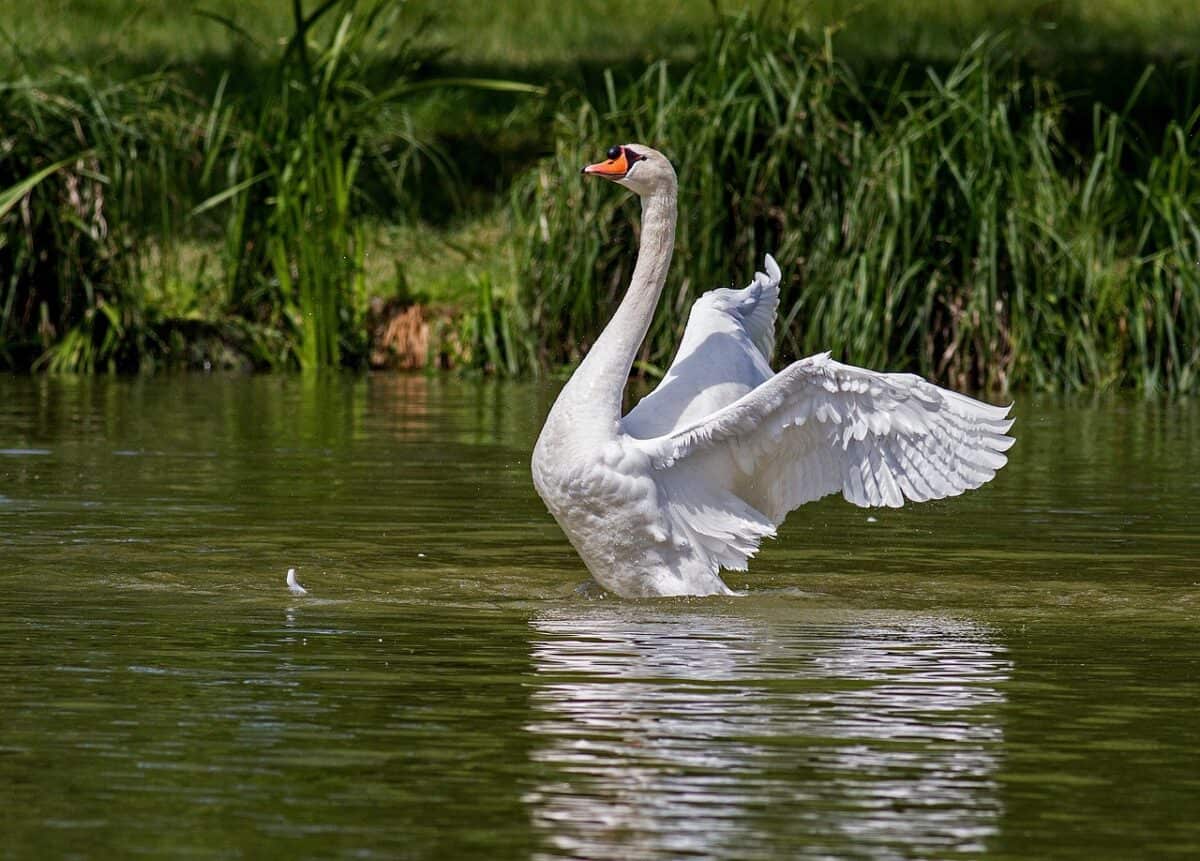
Mute Swans require specific conditions to thrive, including clean water, abundant food sources, and safe nesting sites. Conservation efforts need to prioritize creating and maintaining environments that meet these needs while ensuring that human activities do not disrupt their habitats. Engaging communities in conservation efforts can help balance ecological benefits with human interests.
Conclusion: The Silent Majesty
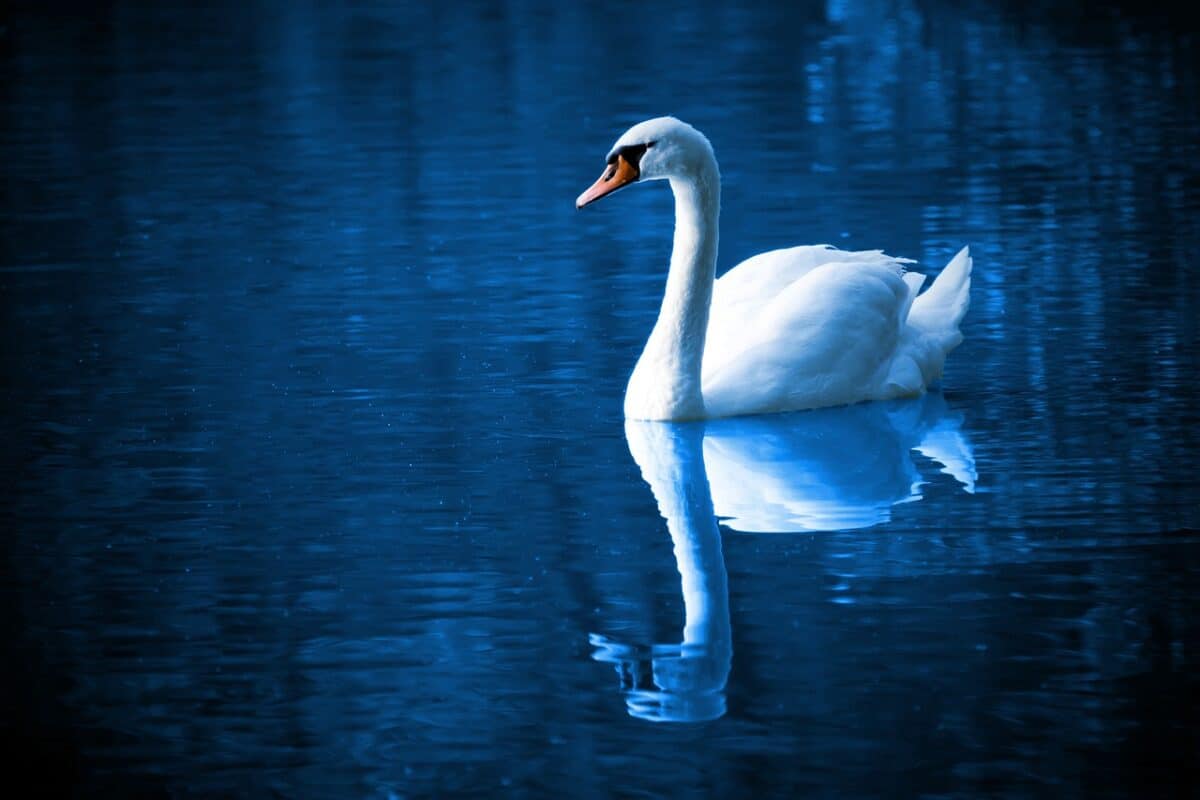
The Mute Swan stands as a magnificent testament to the beauty of the natural world. Their grace and silent presence offer a reminder of nature’s charm and complexity. As we continue to learn and engage with these creatures, let us appreciate and protect the spaces they share with us, ensuring their presence for future generations to admire. These silent beauties are not merely symbols of elegance; they are vital participants in the intricate web of life.
- 14 Myths About Sharks That Simply Are Not True (And 1 That Totally Are) - August 19, 2025
- 9 Shark Behaviors That Are Misunderstood And 4 That Are Real Threats - August 19, 2025
- 15 Strongest Animals by Body Size - August 19, 2025

